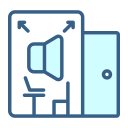Case Studies That Sell Without Selling
Describe the people, pressures, and constraints. Maybe new parents needed storage without sacrificing light, or a downsizing couple feared losing personality. Human stakes create empathy, making readers root for the outcome and trust your judgment.
Case Studies That Sell Without Selling
Walk through options you considered, why certain materials won, and how you balanced budget with longevity. Transparency builds credibility, proving your method is replicable and thoughtful rather than accidental or purely aesthetic preference.
Case Studies That Sell Without Selling
Document tangible wins like added storage cubic feet, improved lighting zones, or timeline saved, then pair them with feelings: easier mornings, clearer surfaces, quieter evenings. Close with a short client reflection to humanize the transformation.




